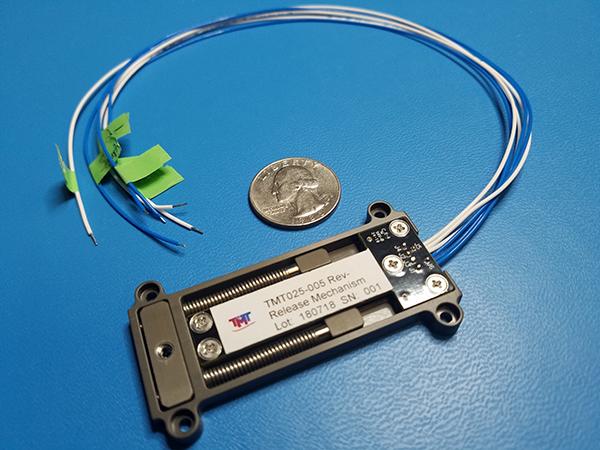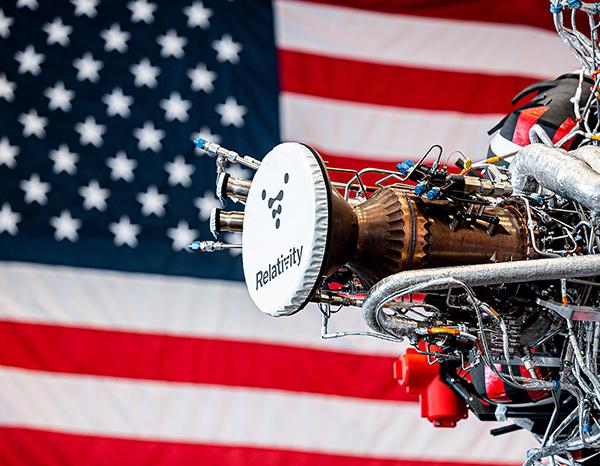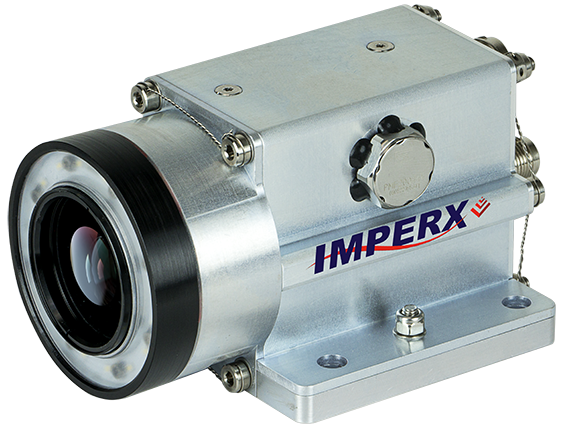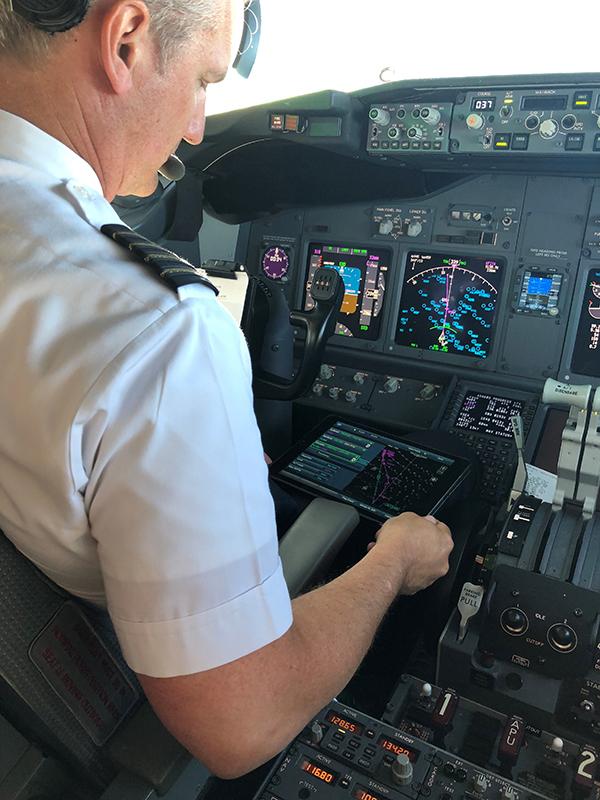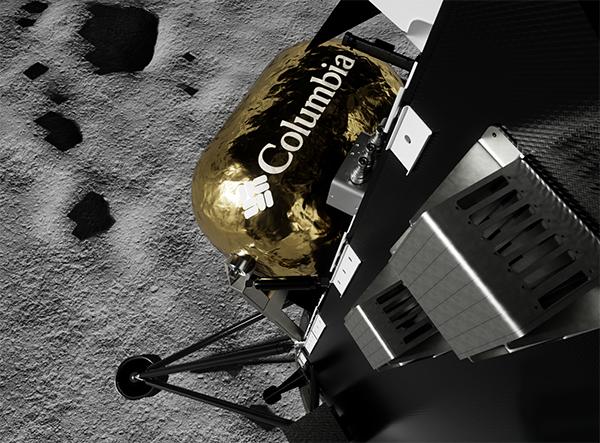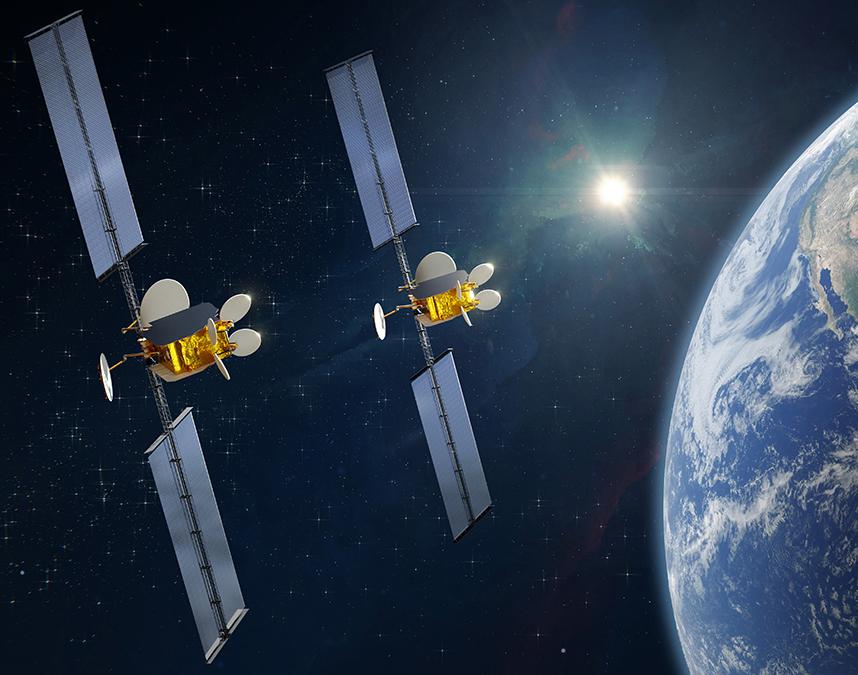Robotic Waterjet Systems
In the late 1970s, before the Space Shuttle made its flight debut, NASA recognized a problem in the fact that the Shuttle's two solid rocket boosters were reusable; they were designed to operate for two minutes on a Shuttle mission, then separate and drop Earthward to a parachute-softened splash in the ocean for recovery and refurbishment.
The problem lay in the refurbishment process: how to strip away multiple layers of tough, removal-resistant paint and thermal protection material, and do it in such a manner that the booster's casing would not be damaged. Clearly, NASA saw, something substantially more advanced than conventional manual stripping would be required.
Marshall Space Flight Center (MSFC) teamed with United Technologies' USBI Company, Huntsville, Alabama, NASA's contractor for booster refurbishment, to develop an advanced stripping system based on hydroblasting, or high pressure waterjet cleaning. To compress eight years of complex research and innovative development into a paragraph, the NASA/USBI team developed a waterjet capable of slicing through the thermal protection material and blowing away the particles; found a way to regulate the jet stream to strip paint and primer beneath the outer protective coating, one layer at a time; and developed a computer-directed six degrees of freedom robot for precise control of the waterjet, in order to prevent damage to the casing. The end result was a system that could strip a booster in a fraction of the time required by manual methods.
This technological solution and its subsequent commercialization is a prime example of high value spinoff from aerospace technology (in this case NASA and, later, Department of Defense technology). It is an example of a technology transfer that not only resulted in formation of a new company, but also spawned a whole new industry. The innovative technology offers a broad range of benefits to maintenance and overhaul organizations in cost and time savings, worker protection and a variety of environmental protection advantages.
United Technologies Corporation took advantage of the apparent commercial potential of the system by investing company funds in refining the NASA/USBI technology, advancing it in new directions, and-in January 1993-establishing a company to commercialize and market the technology. The company is Waterjet Systems, Inc., Huntsville, Alabama, operated by United Technologies' Pratt & Whitney division. Waterjet Systems pursued the military potential of the technology under an Air Force MANTECH (manufacturing technology transfer) program to adapt the booster-stripping technology to large aircraft, then extended the technology to ships through a Navy MANTECH program.
With these and other extensions of the technology, Waterjet Systems established a family of hydroblast systems under the general designation ARMS® (Automated Robotic Maintenance Systems). Generally, they employ high pressure water pumps to create waterblast streams at 55,000 pounds per square inch that are controlled by target sensitive robots maneuvering precisely over one-of-a-kind surfaces. The ARMS family includes:
Aircraft ARMS®. The first application of Aircraft ARMS, a fully automated version derived from the NASA/USBI technology and refined under the Air Force MANTECH program, is the LARPS (Large Aircraft Robotic Paint Stripping) system for Air Force use. Introduced to operational service in 1995, its goals are to reduce stripping time by 50 percent and use of hazardous chemicals by 90 percent. Aircraft ARMS systems are designed for painting and depainting commercial as well as military aircraft.
Ship ARMS®. The Ship ARMS Decoating System was designed for use on large ships, boats, barges, floating drydocks and other vessels. It is a semiautomated, totally mobile system that includes a trailer-based high pressure high flow water pump, a precision computer-designed nozzle and a specialized robotic manipulator and end effector. The system not only strips a ship's multilayer anticorrosion and antifoulant coatings, one layer at a time, but also captures all process effluent; a specially designed vacuum shroud and water recovery/reuse system collects stripped materials and prevents hazardous materials from running off into the water or onto the dock. The U.S. Navy was the first customer; the process has been demonstrated on the aircraft carrier USS Nimitz and two other ships. Among a lengthy list of benefits are environmental gains, such as no airborne particles, reduced waste disposal, reduced eco-impact, and cost-related gains, such as no need for scaffolding or masking, shorter strip and drydock time, and less cleanup.
Engine ARMS®. Turbine engine parts-vanes, combustors, blades, for example-have a variety of coatings to protect them from the hot operating environment. At overhaul time, the engine is disassembled and the parts are stripped of their coatings, customarily by acid bath and grit blasting, processes that are both labor intensive and hazardous to personnel. Engine ARMS does the job faster and cheaper with bonuses in reduction of toxic chemicals, waste disposal and human protection equipment.
Component ARMS®. Components in this sense means major segments of aircraft or military/industrial systems. Among examples that can be decoated by Component ARMS are engine cowlings, rudders, flaps, radomes, helicopter blades, horizontal stabilizers, tail cones and small vehicles (Humvees, armored personnel carriers, tanks, etc.).
®ARMS, Aircraft ARMS, Engine ARMS, Ship ARMS and Component ARMS are registered trademarks of United Technologies Corporation.
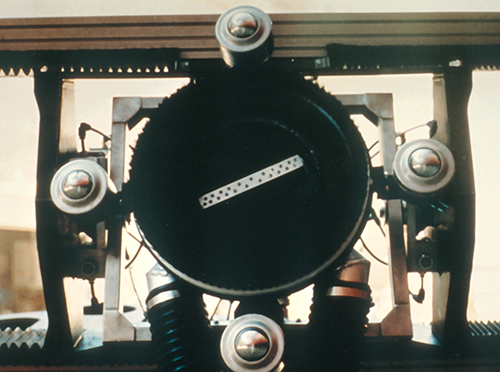
The Ship ARMS Decoating System employs a high pressure water pump to strip unwanted coatings from large ships and other vessels.
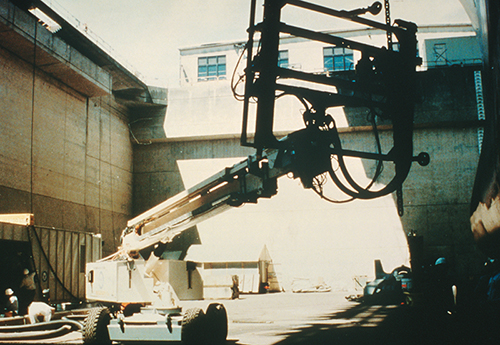
The decoating system can reach high surfaces, eliminating the need for scaffolding.








